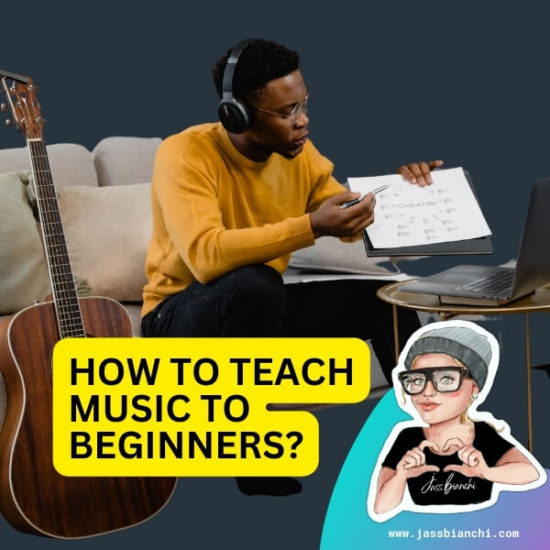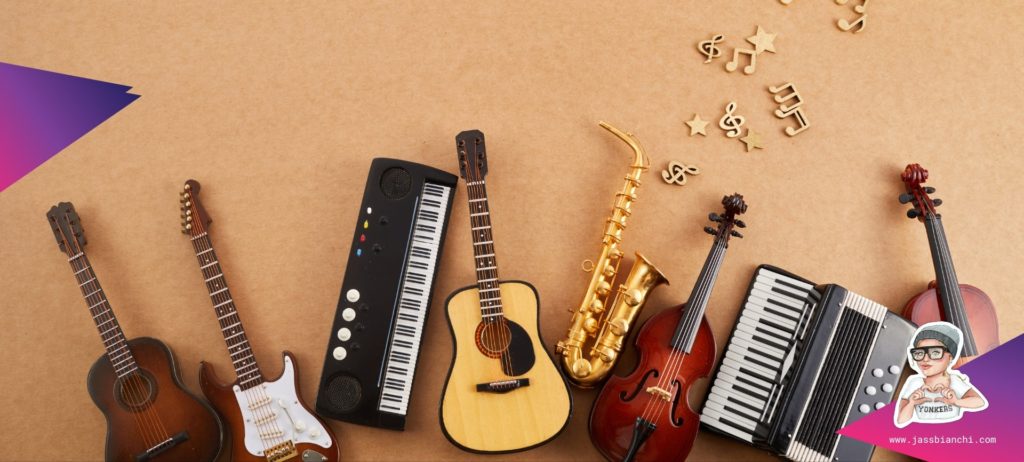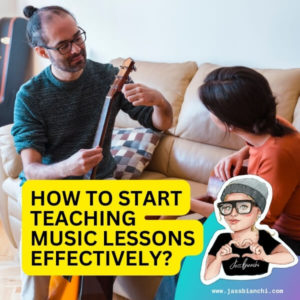
How to teach music to beginners?
Starting on a musical journey is like setting sail on a vast sea of notes, rhythms, and melodies. For beginners, this journey can be both exciting and challenging. As a music mentor, your role is akin to that of a compass. You will guide learners through the reality of music theory, technique, and expression. This blog is a roadmap to help you to understand how to teach music to beginners.
Tune into Their Interests

Tune into Their Interests: Customize music lessons to align with students’ interests and preferences
Every aspiring musician has their unique tastes and preferences. Take the time to understand what kind of music inspires and excites your students. Do not judge them or look over their likes and dislikes. Be nice and accepting of whatever genre they prefer. Use songs from that genre and play them with your learners to engage them with you. Build a deeper connection and try to understand their mindset better. Whether it is
- Classical symphonies
- Jazz improvisations or
- Pop ballads
Tailoring your lessons to their interests will keep them engaged and motivated. Honoring learner interests enhances engagement and meaning in learning. You inspire students to explore their musical talents for a lifelong love of music.
Start with the Basics

Start with the Basics
Starting with the basics means beginning with the most important stuff in music. It’s like making a strong base so that you can understand more complicated things later on. First, you learn about things like how high or low a sound is, how long or short it lasts, and how loud or soft it is. You also learn how to read the notes and symbols that musicians use to write down music. Breaking these big ideas into smaller pieces. Lay a solid foundation by introducing beginners to the fundamentals of music theory. Teach them about pitch, rhythm, dynamics, and other essential elements. Use interactive exercises, games, and visual aids to make learning enjoyable and accessible. This solid start helps you feel more confident. It also makes you excited to learn more and explore all the amazing things music has to offer.
Choose the Right Instrument

Choose the Right Instrument
Choosing the right instrument is like picking the perfect tool for a job. It’s all about finding the one that feels right for you. It might be a piano, guitar, violin, or drums, each instrument has its unique sound and personality. When deciding which one to play, think about what sounds you like. Look into what feels comfortable for you to hold and play. Your teacher can help you figure out which instrument might be best for you. Consider factors such as their physical attributes, musical goals, and personal preferences. Trying out different instruments is also a fun way to discover which one you enjoy playing the most. So, take your time exploring your options. When you find the instrument that speaks to you, you’ll know you’ve found the perfect match.
Break It Down

Break It Down: Break complex musical concepts into manageable segments for easier learning.
Break down complex concepts into manageable chunks to prevent overwhelm. Take a gradual approach, introducing new techniques and skills as students progress. Provide clear instructions and demonstrations, and offer plenty of opportunities for hands-on practice. Breaking it down, step by step, means taking things one piece at a time to make learning easier. There’s a proverb “Slow and steady wins the race”. The reason for the win of the slower one is that they take things slowly but learn them deeply. Instead of trying to learn everything all at once, we break it into smaller, more manageable parts. For example, when learning a new song, we start by practicing a few notes. Then we put the notes and the chords all together. By focusing on one small step at a time, we can master each part before moving on to the next. This helps in building our skills gradually. This approach helps us stay organized and stay focused. Small steps make learning feel more achievable. So, remember to take it one step at a time, and before you know it, you’ll have mastered it all.
Foster a Positive Learning Environment

Foster a Positive Learning Environment: Cultivate a supportive atmosphere where students feel encouraged and inspired.
Create a safe and supportive space where students feel free to take risks and make mistakes. Offer constructive feedback and praise their efforts, no matter how small. Cultivate a culture of mutual respect and collaboration. A place where everyone feels valued and included. It’s about creating a place where it’s okay to make mistakes because we know that’s how we learn and grow. In a positive learning environment, teachers and students respect each other. They listen to each other and help each other succeed. By creating this kind of atmosphere, we can all feel more confident and motivated to learn.
Make Learning Fun and Interactive

Make Learning Fun and Interactive
Inject creativity and excitement into your lessons to keep students engaged and motivated. Incorporate games, puzzles, and creative exercises to make learning enjoyable and memorable. Encourage exploration and experimentation, and celebrate each breakthrough and achievement.
Lead by Example

Lead by Example: Inspire students by demonstrating dedication, skill, and passion for music.
What is better than showing rather than talking? As a teacher, you are not only imparting knowledge but also serving as a role model for your students. Lead by example by demonstrating passion, dedication, and professionalism in your musical practice. Share your experiences and insights to inspire and motivate them along their journey. Leading by example means showing others how to do something by doing it yourself first. It’s like being a role model, someone others can look up to and learn from. Our actions speak louder than words. And, we are always observed by our students. By leading by example, we inspire others to follow in our footsteps and strive for excellence. This is only possible if we are good at something that will encourage the young learners to do well.
Conclusion
In conclusion, to teach music to beginners is rewarding and fulfilling. It requires patience, creativity, and empathy. Empower your students with a positive environment, good techniques, self-expression, and shaping lessons. So, strike up the band, and let the music begin!








